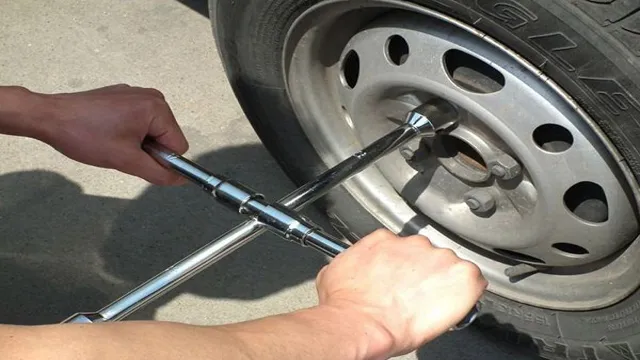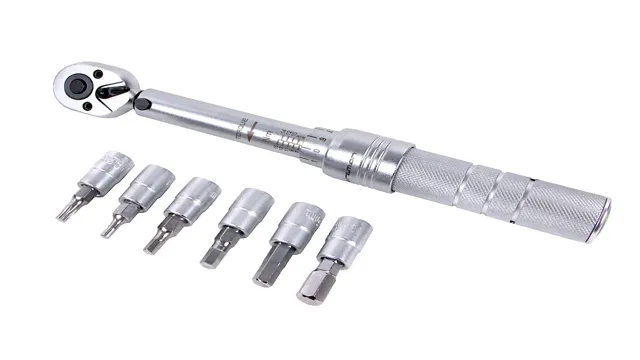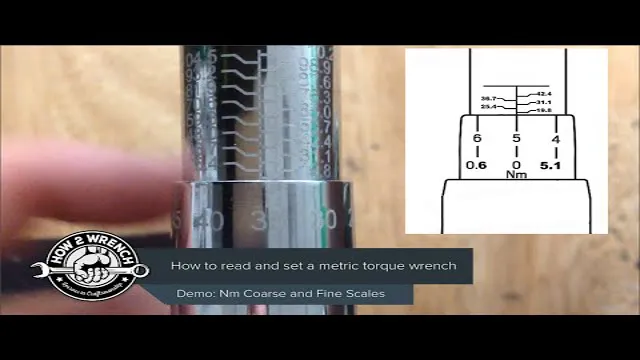Do I Need a Torque Wrench to Change Brake Pads for Optimal Performance?

So, you need to change your brake pads and you’re wondering – do you really need a torque wrench for the job? The short answer is, it depends. Brake pads are an essential safety feature of your vehicle, and improper installation can result in serious consequences. A torque wrench helps ensure that the bolts holding your brake pads in place are tightened to the manufacturer’s recommended specifications, preventing them from becoming loose or over-tightened.
Think of it like baking a cake – you can eyeball the ingredients and hope it turns out okay, but if you want the perfect texture and taste, you follow the recipe with precise measurements. Similarly, a torque wrench is the recipe for a safe and secure brake pad installation. But before you run out and buy a torque wrench, there are a few factors to consider.
If you’re an experienced DIY mechanic or have access to a professional-grade tool, using a torque wrench is definitely recommended. However, if you’re an occasional tinkering type or on a tight budget, it’s possible to get by without one. Just be sure to follow the manufacturer’s instructions carefully and use a good old-fashioned manual wrench with a steady hand.
At the end of the day, safety should always be your top priority when it comes to your vehicle. Whether you opt for a torque wrench or not, be sure to take your time and double-check your work to ensure a successful brake pad replacement.
What is a Torque Wrench?
If you’re planning to change your brake pads, you may be wondering whether you need a torque wrench or not. Well, the short answer is: it depends. A torque wrench is a tool that helps you apply a specific amount of force (torque) to a bolt or nut.
It’s important to use one when working on critical components, such as brakes, to ensure that everything is properly tightened and secure. Over-tightening or under-tightening bolts and nuts can lead to serious safety issues, so a torque wrench can give you peace of mind knowing that you’ve done the job correctly. If you’re not sure whether using a torque wrench is necessary for your brake pad replacement, it’s always best to consult your owner’s manual or a trusted mechanic.
However, in most cases, it’s better to be safe than sorry, so investing in a good torque wrench is a smart move.
Explanation of what a torque wrench is and how it is used
A torque wrench is a specialized tool used to tighten nuts and bolts to a specific level of tightness, referred to as torque. The tool works by applying a specific amount of force, or torque, to the fastener based on the manufacturer’s specifications. This helps ensure that the fastener is secure enough to prevent loosening or failure, but not overtightened to the point of causing damage.
Torque wrenches come in a variety of types and sizes, including beam, click, and digital wrenches, with each having its own unique advantages. Using a torque wrench involves first selecting the appropriate wrench for the job, then adjusting the tool to the desired torque setting. The wrench is then used to tighten the fastener until the desired level of torque is achieved.
It’s important to use a torque wrench correctly to ensure the safety and longevity of your equipment or project.

Why a Torque Wrench is Important for Changing Brake Pads
If you’re planning to change your brake pads, using a torque wrench is crucial for maintaining safe and reliable braking performance. Not only does it help you achieve the correct amount of force needed to tighten the bolts and nuts, but it also ensures that the brake system is properly aligned and functioning as intended. Without a torque wrench, you risk insufficient clamping force which can lead to brake pad wear, decreased stopping power, and even catastrophic brake failure in extreme cases.
It’s easy to overlook the importance of a torque wrench when changing brake pads, but investing in this simple yet essential tool can save you from potential accidents and costly repairs down the road. So, if you’re asking the question, “do I need a torque wrench to change brake pads?” the answer is a resounding yes, for your safety and peace of mind.
Importance of tightening bolts to the correct torque level for safety and performance
When it comes to changing brake pads, using a torque wrench is crucial. Tightening the bolts to the correct torque level is essential for both safety and performance. If bolts are not tightened properly, it can result in brake pads that slip or fail entirely, causing potential accidents.
Using a torque wrench guarantees that the bolts are tightened to the manufacturer’s recommended torque level, preventing any potential issues. Think of it like a jar of pickles – if you don’t twist the lid on tight enough, it may come loose and spill everywhere. The same concept applies to brake pads and bolts.
Ensuring the bolts are tightened correctly with a torque wrench is the key to an efficient and safe brake pad replacement. So, next time you’re changing your brake pads, don’t forget to grab your trusty torque wrench!
Factors to Consider When Choosing a Torque Wrench
If you’re planning to change your brake pads at home, investing in a torque wrench is a wise move. Using a torque wrench ensures that you tighten the bolts properly and to the required specification, preventing accidents and ensuring longer-lasting brake pads. When choosing a torque wrench, consider the type of job you’ll be doing, as there are different types of torque wrenches available.
For example, a beam-type torque wrench is best for occasional use, while a digital torque wrench is ideal for more frequent use. Other factors to consider include the torque range, accuracy, and ease of use. Overall, investing in a torque wrench is a smart choice when it comes to safe and efficient brake pad replacement.
Types of torque wrenches, price range, and considerations for your specific needs
When it comes to choosing a torque wrench, there are several factors that you need to consider to ensure you select the right tool for the job. One of the first things to keep in mind is the type of torque wrench you need. There are several varieties available, such as beam torque wrenches, click torque wrenches, and digital torque wrenches.
Each type has its own pros and cons, so you need to choose the one that best suits your needs. Another factor to consider is the price range. You can find torque wrenches at a variety of price points, and it’s important to balance cost with quality to ensure you get a tool that is reliable and accurate.
It’s also important to think about your specific needs for the tool. Do you need it for personal or professional use? Do you need it for a specific type of job or application? Answering these questions will help you narrow down your choices and find the perfect torque wrench for your needs.
Alternative Options to Using a Torque Wrench
If you are wondering whether you need to have a torque wrench to change brake pads, the answer is no, you don’t necessarily need one. There are alternative options that you can use to tighten the new brake pads securely. One of the most common ways is using a ratchet wrench which is easier to use and more affordable than a torque wrench.
Additionally, some brake pad manufacturers provide specifications on how much force is required to fasten the brake pads into place. You can use a hand-held torque meter in this case to measure the required load and check if the value matches the manufacturer’s specifications. However, it’s still advisable to use a torque wrench if you have one, as it helps ensure the proper tightness that prevents brake noise and uneven wear.
So, while you can change brake pads without a torque wrench, having one makes the task much easier and safer.
Other methods to ensure safety and correct tightening of bolts without a torque wrench
While a torque wrench is a preferred method for ensuring bolt safety and correct tightening, there are alternative options available. One such option is to use a torque angle gauge, which measures the angle through which a bolt has turned after initial tightening. This helps ensure that a bolt is tightened uniformly and reduces the risk of it coming loose.
Another option is using a dial indicator, which measures the amount of stretch on a bolt. By measuring the amount of stretch, you can gauge the level of tightness and ensure that a bolt is fastened uniformly. However, it’s important to note that these methods also require some level of experience and expertise to use.
If you’re not comfortable using these tools, it’s always best to seek the help of a professional. By taking these steps, you can help ensure the safety and functionality of your bolts without the use of a torque wrench.
Conclusion
In the world of auto repair, having a torque wrench is like owning a superhero’s power tool – it ensures that everything is tight, secure, and ready to take on the road. However, when it comes to changing brake pads, the question of whether you need a torque wrench can be a bit tricky to answer. While it’s certainly helpful to have one at your disposal, it’s not always a necessity.
As long as you have a good understanding of your vehicle’s specific torque requirements and can apply the necessary pressure using a standard wrench, you’ll be good to go. So, while a torque wrench may be a powerful tool, don’t feel like you absolutely need one to tackle your next brake pad replacement – just make sure to double-check those torque requirements and trust in your own hands-on skills. “
The importance of safety and correct installation when changing brake pads and the role of a torque wrench
Changing brake pads is an important aspect of car maintenance, but doing it improperly can lead to serious safety issues. When changing brake pads, it is crucial to use a torque wrench to ensure that the bolts are tightened to the manufacturer’s recommended specifications. However, if you do not have access to a torque wrench, there are alternative options available, such as using a socket wrench with a breaker bar and estimating the tightening torque based on the amount of force you apply.
However, it is important to note that these methods are less accurate and can lead to over or under tightening of the bolts, which can result in brake failure or damage to the car’s components. It is always best to invest in a torque wrench or take your car to a professional mechanic who has the proper tools and experience necessary to perform safe brake pad installations. Your safety is always worth the extra effort and expense.
FAQs
Why do I need a torque wrench to change brake pads?
A torque wrench ensures that the brake pads are installed to the manufacturer’s specifications, which ensures proper braking performance and safety.
Can I use a regular wrench instead of a torque wrench?
It is not recommended to use a regular wrench because it can over-tighten or under-tighten the brake pads, which can lead to brake failure or premature wear.
How do I know what torque setting to use?
The torque setting can be found in the vehicle’s owner manual or online. It is important to use the correct torque setting to avoid damaging the brake pads or calipers.
Do I need to re-torque the brake pads after driving for a certain distance?
It is recommended to re-torque the brake pads after a few hundred miles of driving to ensure they are still properly tightened.
Can I reuse the torque specs for my old brake pads on my new ones?
It is not recommended to reuse old torque specs because different brake pad materials may require different torque settings.
Is it necessary to use a torque wrench every time I change my brake pads?
While it is not required, using a torque wrench every time ensures consistent and proper installation of the brake pads, which ultimately leads to better braking performance and safety.
What happens if I don’t use a torque wrench when changing brake pads?
If the brake pads are not installed to the manufacturer’s specifications, it can lead to diminished braking performance, premature wear, or even brake failure.



